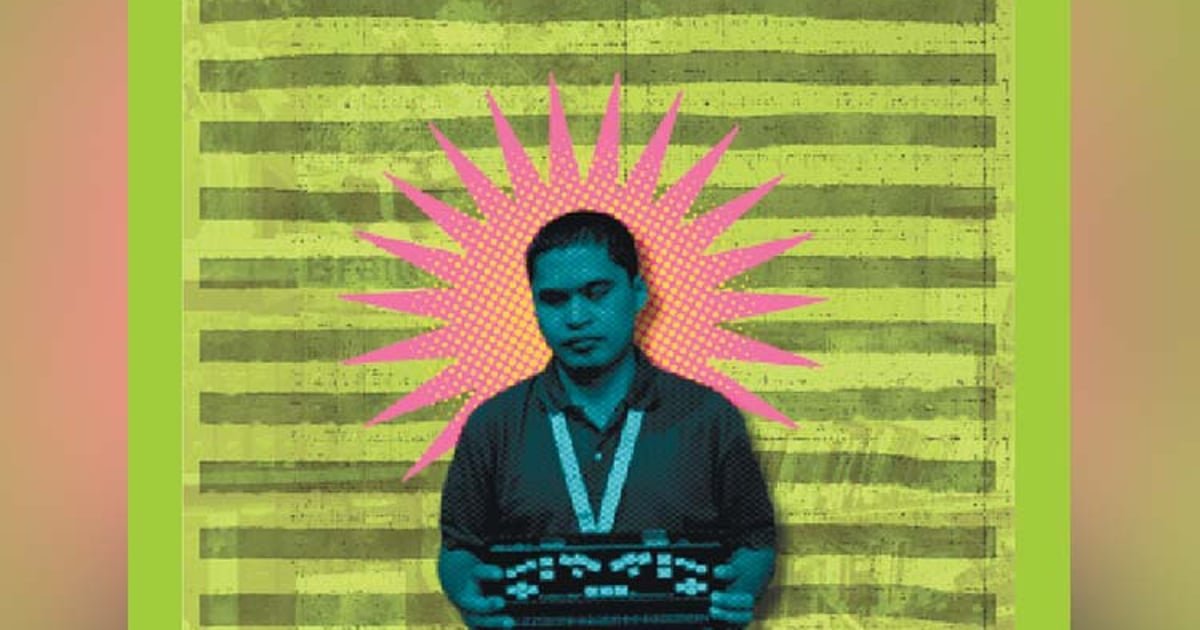In A little nook inside the Cebu City Public Library (CCPL), people passing by are unaware that the man always sitting in his tiny chair is lost somewhere.
The man has visited a web of worlds, perhaps fighting knights and kings in a far-away place. This world was once thought to be accessible to only those who can–able. With keys in his hands, he has unlocked and entered more universes than onlookers and naysayers likely ever will.
He is blind. He pressed on. Always. And in his next adventures, Leoniver Gaquing no longer wants to be alone. So he is out on a quest.
“It seems that people think it’s just a matter of poking around, just touching. That’s one of the things I’ll orient them about,” Gaquing answered in Cebuano.
Gaquing is the head of the Braille section at the CCPL, a specialized area that, despite its crucial role, remains under-visited even by the visually impaired.
Braille is a system of raised dots that can be read with the fingers by people who are blind or who have low vision. According to the American Foundation for the Blind, Braille is not a language; rather, it is a code by which many languages may be written and read.
Gaquing is the only teacher at the library who teaches this system.
The World Health Organization reports that there are up to 45 million people who are blind globally, and this number is expected to grow.
In the Philippines alone, Resources for the Blind Inc. said there are half a million visually impaired individuals.
Although there is no exact data on the number of blind individuals who are literate in Braille in the country, Gaquing is one of many who aims to use his knowledge to help others read and raise awareness that such services are accessible to the visually impaired, especially in Cebu.
“I always clarify to those interested in learning Braille the reason why Braille was developed. It’s definitely not just dots,” Gaquing said.
In many educational settings, particularly in specialized institutions, it is more common for sighted teachers or instructors to teach Braille to blind students. Gaquing, however, is challenging conventional norms and demonstrating that a blind individual can effectively teach Braille to other blind students. He also emphasized that Braille is not only for the blind but is also a valuable tool for anyone eager to learn.
A whole new world
“Yes, the blind can also use Facebook.”
Being visually impaired does not mean they cannot do the things sighted individuals can, and this is what Gaquing wants everyone to understand.
A sight to see, Gaquing is proficient in tinkering his computer and smartphone, surfing the web daily with an ease indistinguishable from that of a sighted individual.
Gaquing loves reading articles online, especially those on chess techniques, and also enjoys browsing social media pages and even e-commerce platforms.
Technology
He can do this thanks to advancements in technology, like using text-to-speech software for guidance.
However, a game-changing technology for the blind comes in the form of an Electronic Braille Display (EBD), a keyboard that provides access to information on a computer screen by electronically raising and lowering different combinations of pins in braille cells. Several EBDs have been loaned to the CCPL since 2015 by a Japanese electronics manufacturer.
These Braille displays can be connected to a computer through USB ports and a screen reader software interprets the text from the digital device and sends it to the Braille display.
The visually impaired can also write their hearts’ desires using the device.
“It’s very useful, especially for studies because the device isn’t just any ordinary gadget. You can plug in a flash drive or connect it to a computer to read websites,” Gaquing said.
This technology enables blind or visually impaired users to access digital content in a way that is both efficient and accessible, empowering them to engage with information in real time.
“The role of technology is growing very rapidly. We really need to adapt. It’s a good thing that there are companies manufacturing gadgets using that technology for us,” Gaquing said.
With these innovations, the visually impaired can explore a whole new world through the touch of their fingertips.
(To be continued)




